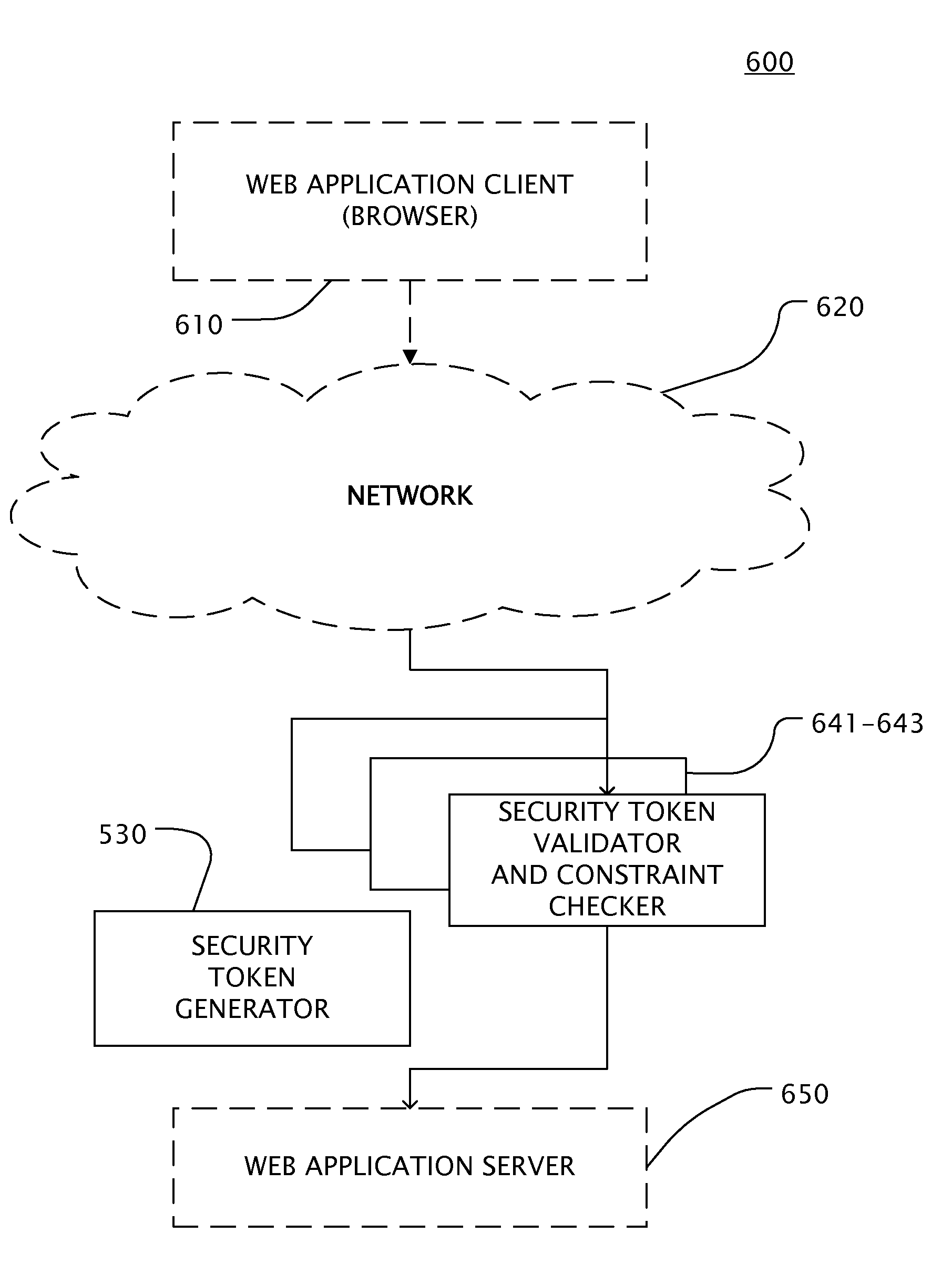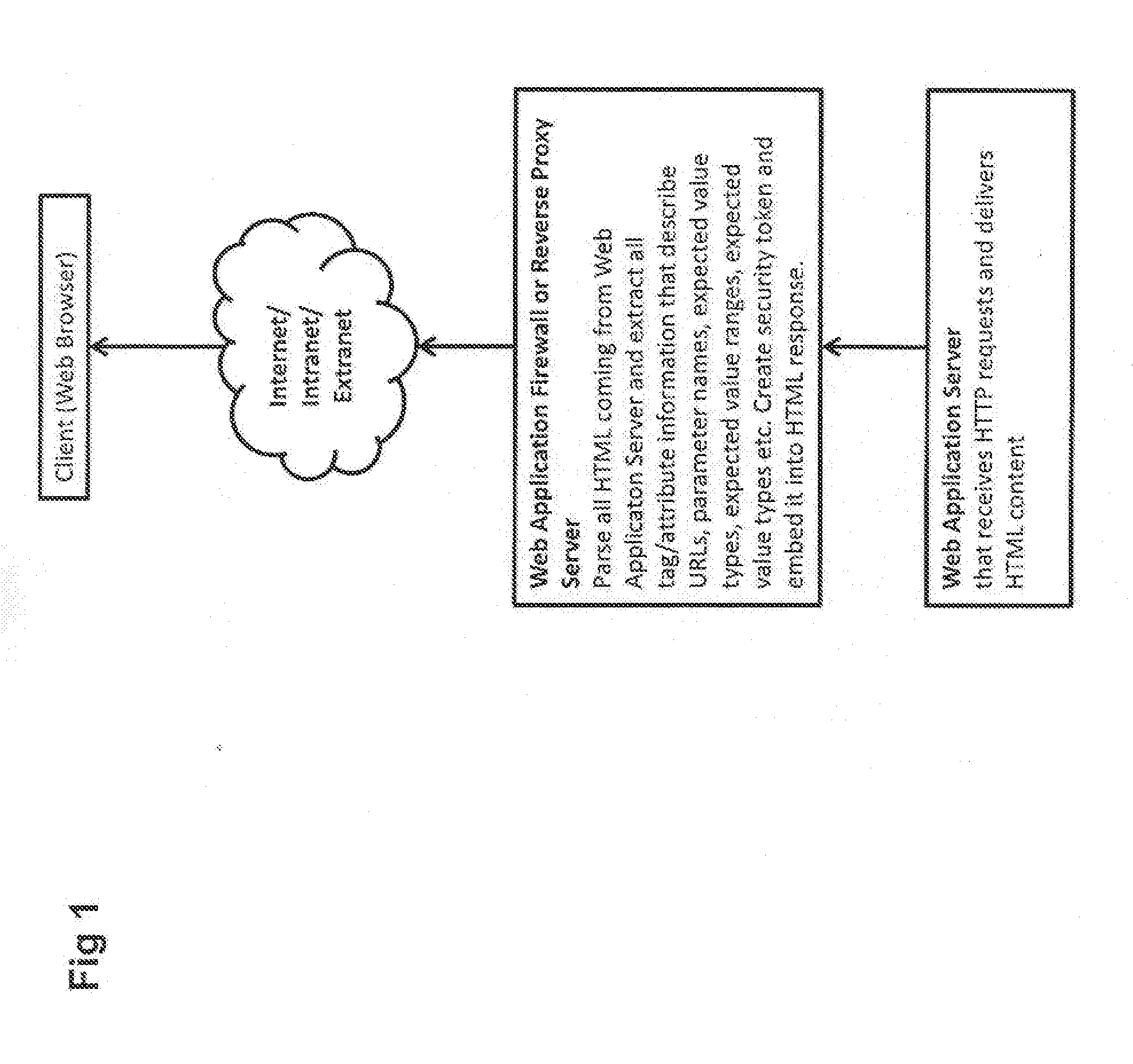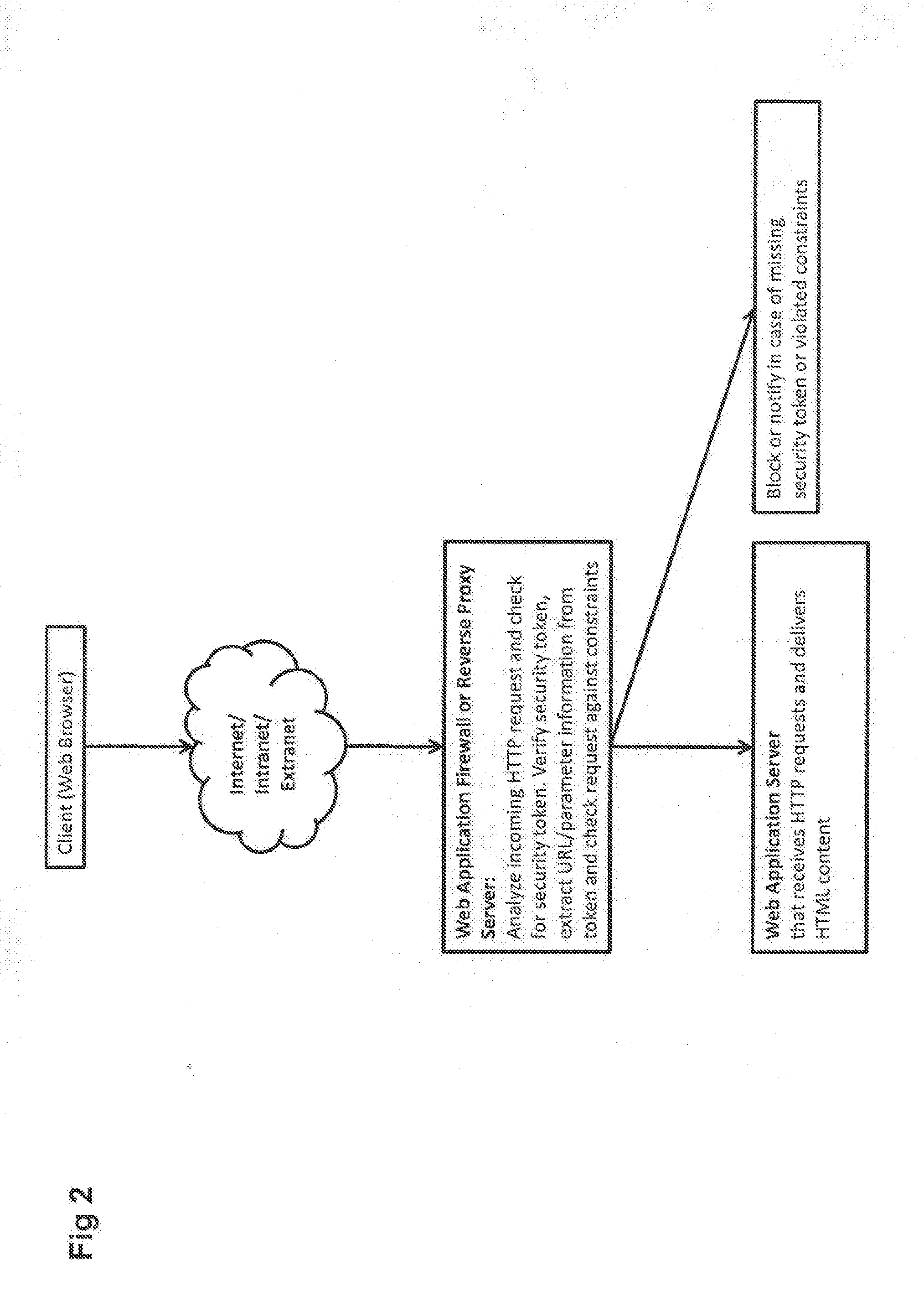Web application security filtering
a security filtering and web application technology, applied in the field of web application security filtering, can solve the problems of limiting data transfer, not preventing content servers from hacker attacks, and not protecting web application servers from active hacking attempts, so as to achieve less power, less sensitive, and efficient and simple solutions
- Summary
- Abstract
- Description
- Claims
- Application Information
AI Technical Summary
Benefits of technology
Problems solved by technology
Method used
Image
Examples
Embodiment Construction
[0057]FIG. 1 shows a first part of an embodiment of the Web application security filtering method, whereby HTML content provided by a Web application server is parsed by security service of a Web application firewall or a reverse Web proxy server. HTML request content and tag or attribute information that is relevant to describe valid URIs, parameters, parameter value types, parameter value ranges etc is extracted.
[0058]Based on the extracted information, a security token is embedded by the security service of the Web application firewall or the reverse Web proxy server into the HTML code. The security token contains all necessary information to check against the URI or parameter description later and is preferably encrypted and digitally signed. The Web application firewall or reverse Web proxy server does not need to store special information regarding the HTML data or constraints on client inputs.
[0059]FIG. 2 shows a second part of an embodiment of the Web application security fi...
PUM
 Login to View More
Login to View More Abstract
Description
Claims
Application Information
 Login to View More
Login to View More - R&D
- Intellectual Property
- Life Sciences
- Materials
- Tech Scout
- Unparalleled Data Quality
- Higher Quality Content
- 60% Fewer Hallucinations
Browse by: Latest US Patents, China's latest patents, Technical Efficacy Thesaurus, Application Domain, Technology Topic, Popular Technical Reports.
© 2025 PatSnap. All rights reserved.Legal|Privacy policy|Modern Slavery Act Transparency Statement|Sitemap|About US| Contact US: help@patsnap.com



